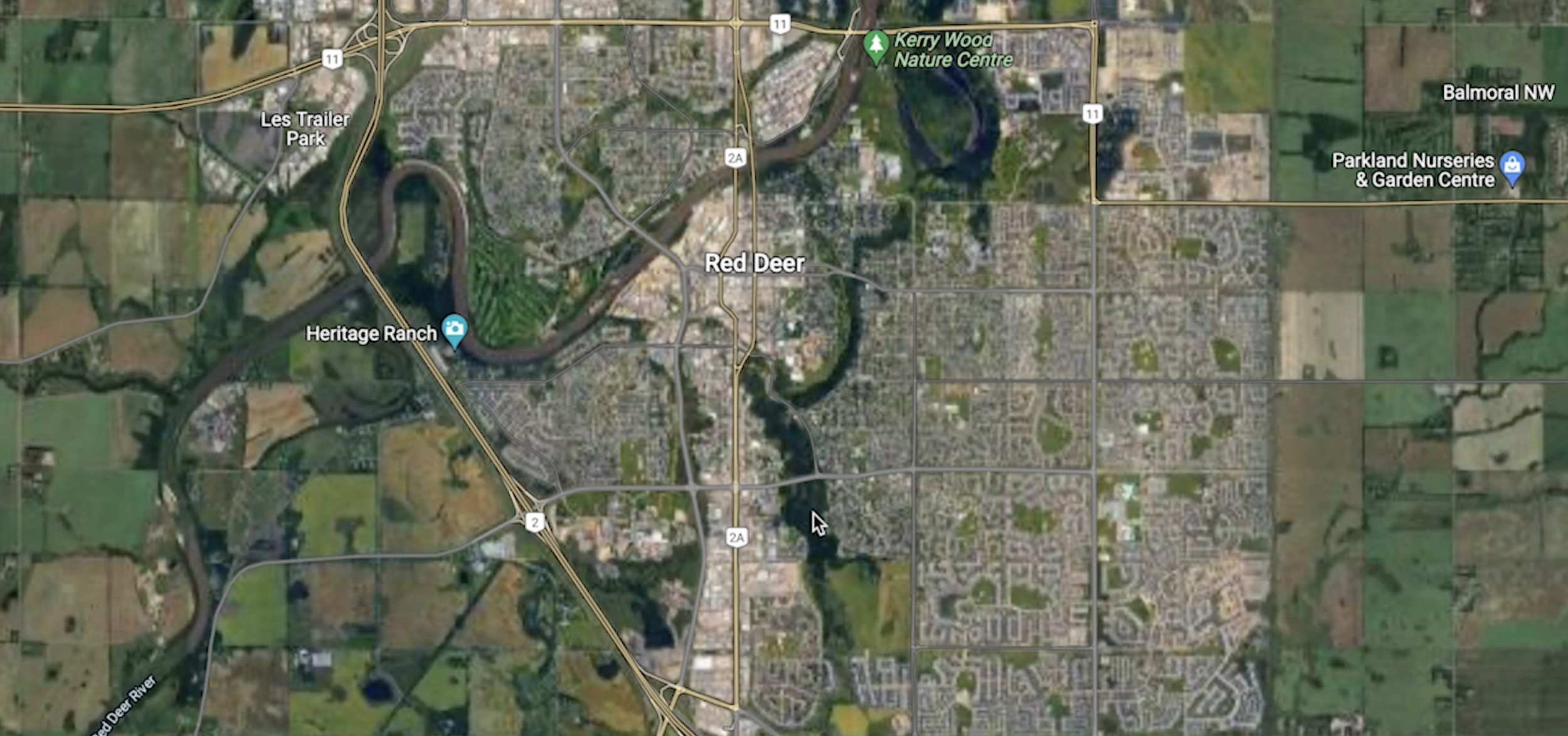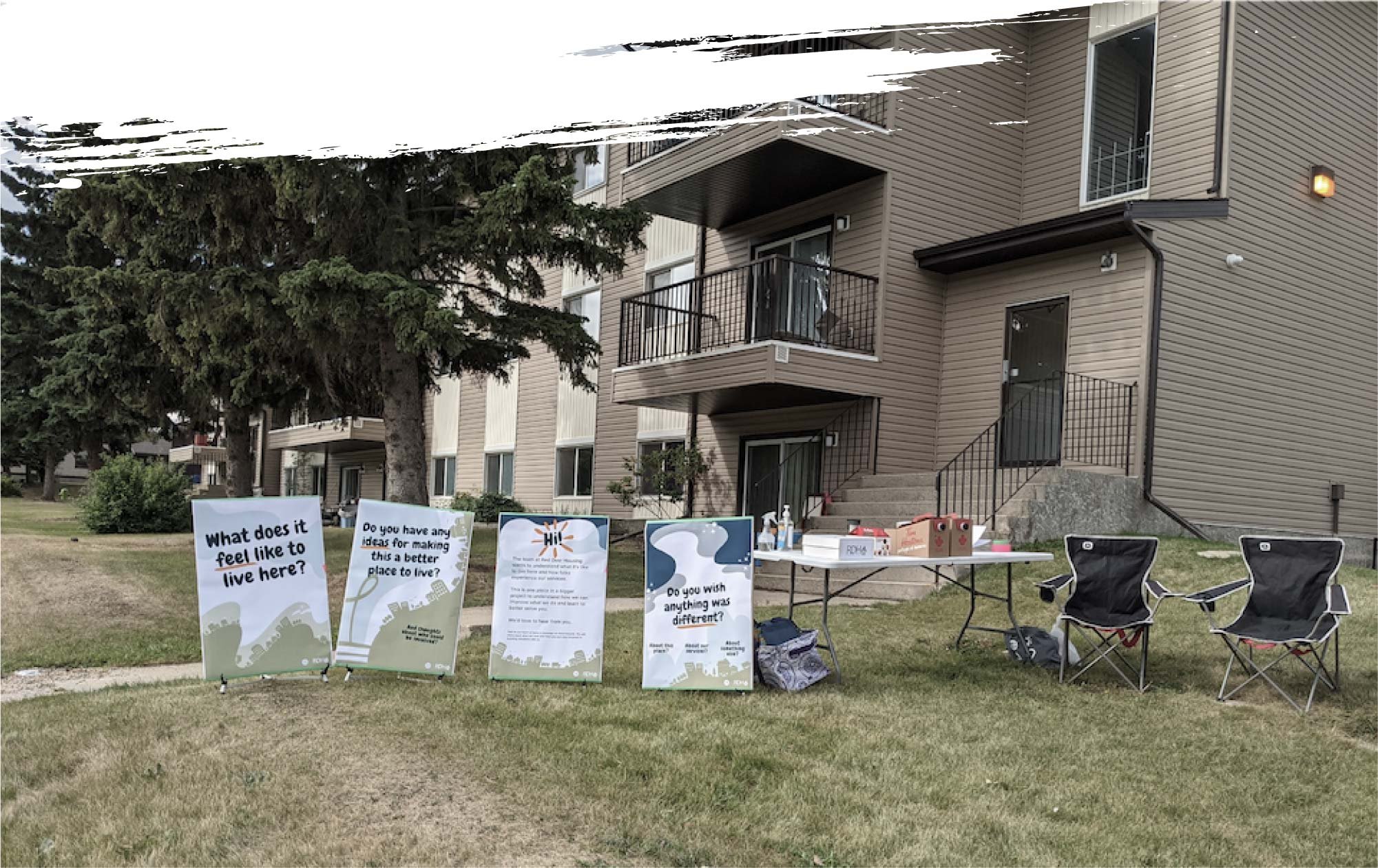Red Deer Housing Authority
Moving from a housing authority to community.
RDHA is a small organization that supports affordable housing options in a small municipality in the middle of Alberta, Canada.
In 2021 they commissioned J5 Design to conduct an assessment of their current state customer experience, along with recommendations about how to improve it. They came with a senior leadership team and board committed to becoming more customer-driven, and to make meaningful connections between the community of people they serve.
RDHA, like so many similar organizations, are limited by a strict regulatory structure, legacy and aging infrastructure, and a complex mandate with limited funding. At the same time, RDHA has a passionate and talented team of frontline staff who care about creating positive impacts, and a board and leadership team committed to empowering them.
This project utilized Human Centered Design (HCD) and Co-Design as its core methodologies. We prioritized learning directly from customers with the client team and delivering solutions together.
Our design approach recognized that the process is the work. We wanted to offer outputs that could have a life beyond the project. Creating tools and templates that could be evolved and shared by staff in future projects, or used to build culture and buy in.

Franklin Kutuadu
Chief Administrative Officer
“We’ve moved from being your average landlord, to understanding that we are the landlord of last resort, and our relationship needs to be different. For example, we’ve had tenants who are fighting. In the past we wouldn’t have thought it was our job to help support them with mediation.
But because of the complexity of what they are dealing with – we needed to take a different approach. The provincial government has acknowledged that they would have been gone from most providers… but we were able to support them because we changed how we thought about our role.”
Building with, not for people.
The best people to understand and evolve their service are the staff themselves. Our first challenge was to build and customize a service design training program for them.
It needed bring together a set of tools for them to understand the services they currently provide, to introduce them to design thinking and approaches, and to stay adaptive in a changing work environment (COVID restrictions, hybrid work & online collaboration). RDHA leadership invested the time and staff to participate in this project from across the organization including Finance, Maintenance & Operations, Frontline Service, even the board.
Their dedicated team participated in a combination of self-serve learning modules, online workshops, field research, insight synthesis, ideation & recommendation development.
Over the 12+ week learning experience the “students” applied their learning in real time to a project and became our direct collaborators in delivering the service design work. Coaching was provided in between sessions, particularly as the learners advanced and began to apply the learning in the field.
Tracy Huynh, Finance
“Getting out of the office and talking to people humanized the impact of the decisions that I get to make in the office. Before we started this project, I was content to put out fires where they cropped up. But now that I’ve had the chance to talk to our customers, I’m determined to focus on being of proactive instead of reactive.”
How we did it, together.
Step 1: Getting Into The Field Together
The participants articulated their assumptions about friction points, user needs & personas, and the other system dynamics at play. Next we worked with them to develop a design research plan to that included:
semi-structured phone interviews with key stakeholders and partners,
intercept interviews in the field during maintenance calls (done by the person doing the actual repairs),
phone interviews with potential clients (on waitlists),
observational tours through the range of properties they operate and coffee / campfire chats onsite at three of their buildings.
We worked side by side with them to collect data, run interviews, haul a propane campfire from building to building and document the conversations that ensued. It was an energizing and transformative experience for us all. It also reinforced the importance of “leveling the playing field” between designer, client & customer – and creating the conditions for everyone to contribute.
Step 2: Making Sense of the Mess
We co-facilitated workshops with the core team and their colleagues to identify the major themes, insights and ideas that had emerged from the engagement. This was followed by more iterative sensemaking using the same online collaboration tools and processes as the learning platform. What was striking in this process was how much information about strategic vision and direction was embedded int the more tactical improvements and friction points we were validating.
Step 3: Delivering Emotional Stories & A Roadmap
The more design activities had yielded a strong list of recommendations and initiatives that could change the way the client delivers services. But they had also uncovered some of culture challenges. We worked to frame out a set of values-based recommendations that could anchor the strategic ideas inside the new skillsets our training program had started to nurture.
The result was a report & roadmap grounded in stories and imagery collected in the field. It was part culture playbook, part service design blueprint and part action & prototype list. This was presented to the board of directors alongside a narrated video. Elements of it were directly metabolized by the organization including hiring a new manager to lead tactical experience improvements identified in the engagements.
Project Impact
The client has shared with us three key areas of impacts of the work to date. The outcomes of the ideas and interventions the team developed will continue to emerge over the next few years. Here are the impacts in their words:
It Changed Our People:
“The first and biggest impact was on the team of participating staff. It changed their whole perspective on a professional and personal level and transformed the way they approach social housing in general. That was the most significant one for me.
The ride along tours, the direct interaction with the clients, the getting out of the building… that has been an eye opening experience for them. I see my staff making customer focused decisions with empathy. The experience of learning & doing solidified the foundations of what they want to do and where they want to be in making a positive impact.”
It Inspired Our Board & Leaders to Think Bigger:
“The depth and nature of what we were dealing with came alive through the “it’s complicated video” and the deliverables that were created. The tangible results made the Board of directors realize that they needed to see the bigger picture. This is what led us to re-engage the design team to help us develop a strategy plan in a new way. And to do that using the same kind of engagement we learned in the training – but with our stakeholders. And to reach for a much broader engagement with people and groups we have not engaged with before. We wanted to hear from everybody. We need to think beyond being a landlord.”
We Began Building Better Relationships With Our Clients:
“The perspective we’ve gained and the relationship between us and our clients and our tenants…it’s totally different. I hear that they’ve seen a huge improvement in our approach. As a result of the recommendations, we hired a manager to help improve the experiences of our clients. Since January we’ve been going through a process of re-examining our service delivery at every level.





